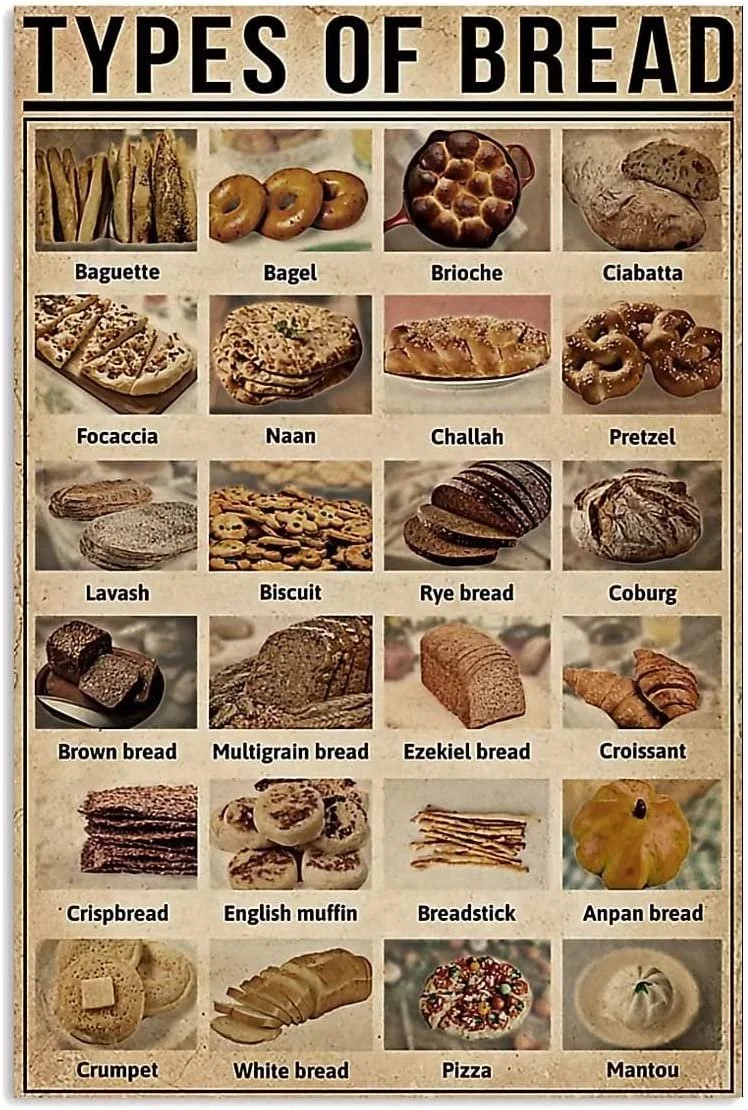Breads
As ubiquitous as it may seem, bread is not a "natural" food, notes food historian Massimo Montanari. It is a product of human ingenuity and technology, an alimentary achievement comparable to constructing the wheel or making fire.
"Bread is a truly great invention, whose secret is only known to man and to no other living creature. For this reason ancient Mediterranean societies viewed bread as a symbol not only of civilization but of the very identity of man, who distinguishes himself from other animals in that he knows how to construct his own food."
Types of Bread
Bread is usually made from a wheat-flour dough cultured with yeast, allowed to rise, and baked in an oven.
Common wheat, or "bread wheat," is the most common grain used for making bread. Rich in gluten, its dough has more sponginess and elasticity than other grains.
Bread is also made from flour of other wheat species (durum, spelt and emmer) as well as rye, barley, maize, and oats.
Spelt bread (Dinkelbrot) is especially popular in Germany. Emmer breadwas a staple in ancient Egypt. Rye bread is higher in fiber than most breads and is often darker in color and stronger in flavor. It is popular in Scandinavia, Germany, Finland, the Baltic States, and Russia.
White bread is made of flour containing only the central core of the grain (endosperm). Brown bread is made with endosperm and 10% bran. Wheat bread is usually white bread with added colouring.
Wholemeal bread -- "whole-grain" or "whole-wheat bread"-- contains the whole of the wheat grain (endosperm, bran, and germ).
Wheat germ bread has added wheat germ for flavoring.
Whole-grain bread refers to wholemeal bread, or to white bread with added whole grains to increase its fibre content.
Roti is a whole-wheat-based bread eaten in South Asia. Chapatti is a larger variant of roti. Naan is a leavened equivalent to both.
Granary bread refers to breads made from flaked wheat grains and white or brown flour with a malting process that maximizes the sugar content.
Unleavened bread or matzo, used for the Jewish feast of Passover, does not include yeast, so it does not rise.
Sourdough bread is made with a starter.
Flatbread is often simple, made with flour, water, and salt, and then formed into flattened dough; most are unleavened, made without yeast or sourdough culture, though some are made with yeast.
Hempbread is a heavy, nutritious bread high in protein and essential fatty acids. Hemp flour is a by-product made by pressing the oil from hemp seeds and milling the residue. It doesn't rise and is usually mixed with other flours.
Crisp bread is a flat and dry bread or cracker containing mostly rye flour.

